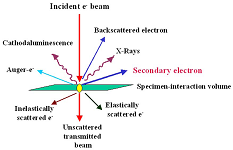
Asia Pacific Academy of Science Pte. Ltd. (APACSCI) specializes in international journal publishing. APACSCI adopts the open access publishing model and provides an important communication bridge for academic groups whose interest fields include engineering, technology, medicine, computer, mathematics, agriculture and forestry, and environment.

The analysis of 15 inorganic elements across 8 components in Chuanxiong Cha Tiao San
Vol 1, Issue 1, 2020
Download PDF
Abstract
This resarch aims to study the characteristics of fifteen inorganic elements in eight components of Chuanxiong Cha Tiao San by the ICP-MS method. An ICP-MS method is established to determine the content of 15 inorganic elements in the 8-component medicines of Chuanxiong Cha Tiao San. A characteristic profile for these 15 inorganic elements in the medicines is created. We use SIMCA-PCA to analyze the differences among the 8 components medicines, and principal component analysis (PCA) is also employed to identify the common inorganic elements responsible for the wind-dispelling and pain-relieving effects of Chuanxiong, Qianghuo, Baizhi, Xixin, Jingjie, Fangfeng, and Bohe. The Student-Newman-Keuls is used to compare the differences in the common efficacy-related inorganic elements among these 7 herbs. We found that the characteristic profile of fifteen inorganic elements in the eight component medicine of Chuanxiong Cha Tiao San are strongly defined. From SIMCA-PCA, the 3D scatter plot shows a significant difference between Licorice and the other 7 herbs. By analysising the main component, it indicates that the common inorganic elements contributing to the wind-dispelling and exterior-releasing effects of Chuanxiong, Qianghuo, Baizhi, Xixin, Jingjie, Fangfeng, and Bohe are Mg, K, and S. Among the 7 herbs, the differences in Mg and S were not statistically significant, while the difference in K was statistically significant. From this research, we can know that the ICP-MS method is accurate, reliable and reproducible, the difference in the inorganic element profiles among the 8 components is significant, and the common efficacy-related inorganic elements is Mg, K and S.
Keywords
References
- National Pharmacopoeia Committee. Pharmacopoeia of the people’s Republic of China: Volume I (Chinese). Beijing: China Medical Science and Technology Press; 2015. p. 519.
- Wu H, Hu Z, Shi L. Meta analysis of Chuanxiong tea regulating powder in the treatment of migraine (Chinese). Journal of Chengdu University of traditional Chinese medicine. 2013; 36(3): 99-102.
- Zhao Y, Chen L, Guo H, et al. Discussion on Analytical Application and evaluation methods of inorganic elements in traditional Chinese medicine based on ICP-MS technology (Chinese). Chinese Journal of new drugs. 2019; 28(1): 54-59.
- Zhou Z. Overview of research on related factors affecting trace elements in traditional Chinese medicine (Chinese). Trace elements and health research. 2002; 19(1): 66-68.
- Zhou B, Li X. Research progress of inorganic elements in Chinese herbal medicine (Chinese). Feed Expo. 2013; (1): 12-15.
- Wu L, Yang Y, Zhang Z, et al. The relationship between the content characteristics of inorganic elements in 8 hemostatic traditional Chinese medicines and their properties, flavors and effects (Chinese). Chinese Journal of traditional Chinese medicine. 2014; 32(10): 2314-2316.
- Deng J, Liu J, Qin J, et al. Determination of 14 inorganic elements in 20 traditional Chinese medicines for promoting blood circulation and removing stasis and their correlation with drug properties (Chinese). West China Journal of pharmacy. 2009; 24(1): 70-73.
- Yang B, Wang Z. Study on the correlation between cold and heat properties of plant traditional Chinese medicine and inorganic elements (Chinese). Journal of Nanjing University of traditional Chinese medicine. 2011; 27(2): 109-111.
- Zhang W, Zhao R, Wang L, et al. Changes of trace elements in hair of rats with wind cold and deficiency invading the lung (Chinese). Practical clinical practice of integrated traditional Chinese and Western medicine. 2008; 8(2): 41-42.
- Zhang Z, Xu Z, Zhang S. Magnesium and human health (Chinese). Trace elements and health research. 2006; 23(4): 67-69.
- Yu T. Changes of substance P and its receptor in the midbrain of migraine rats and the effect of magnesium sulfate on its changes (Chinese). Changchun: Northeast Normal University; 2009.
- Wu M. Potassium and human health (Chinese). Trace elements and health research. 2011; 28(6): 61-62.
- Foreign trade industry standards of the people’s Republic of China. Green industry standard for foreign trade of medicinal plants and preparations. WM/T2-2004.2005 (Chinese). Foreign trade industry standards of the people’s Republic of China; 2005.
Supporting Agencies
Copyright (c) 2020 Xi Li, Xiaoxiao Wang, Yixin Yao, Jinpei Chen, Peihua Zhang, Shanshan Gao

This work is licensed under a Creative Commons Attribution 4.0 International License.

This site is licensed under a Creative Commons Attribution 4.0 International License (CC BY 4.0).
1.jpg)
Prof. Sivanesan Subramanian
Anna University, India





.jpg)
